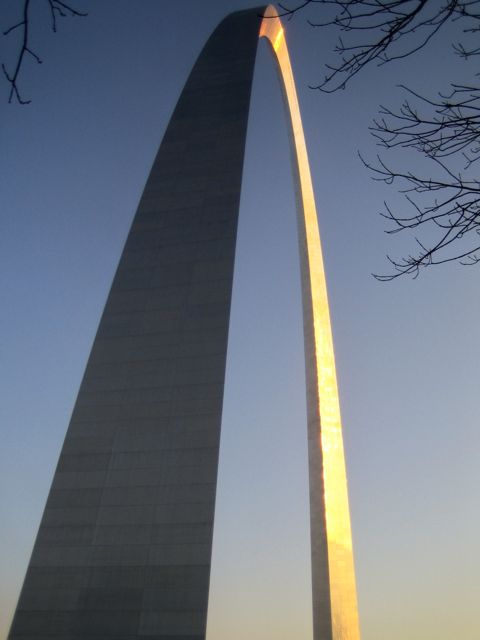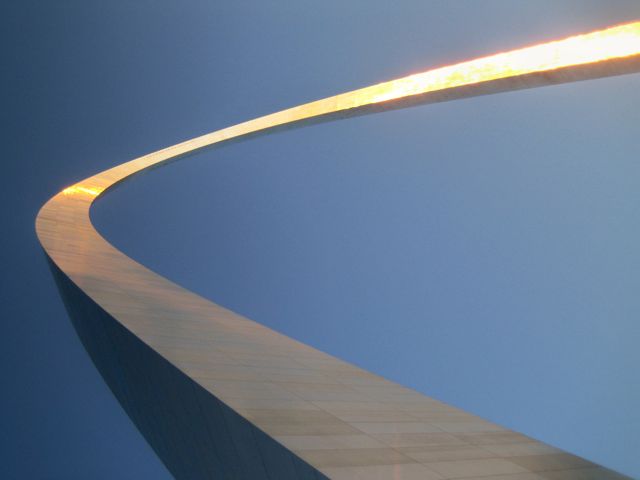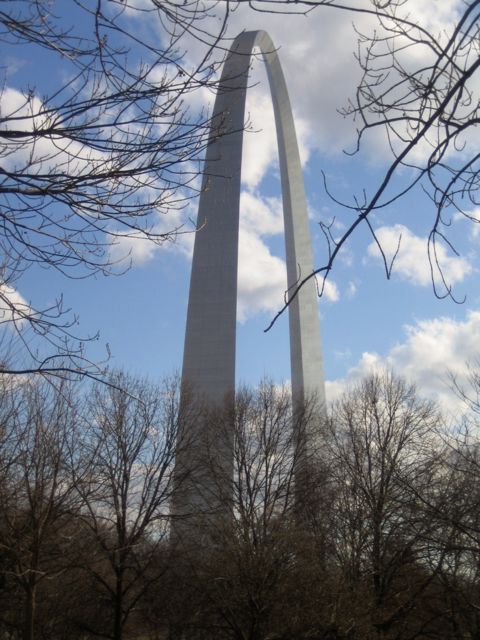St Louis
By Quentin Cockburn
St Louis has a remarkable arch. It is superb, it soars above the Mississippi and then performs the most graceful of curves, weightless, shining, rapier sharp, eternal. Such a simple piece of sculpture, evocative. In one act it expresses a weight of history and an unrestrained optimism for the future. St Louis is like that. There’s a sense, amid the fly-overs, and freeways that quarantine the city from the river, that, though second placed to Chicago, it may rise again.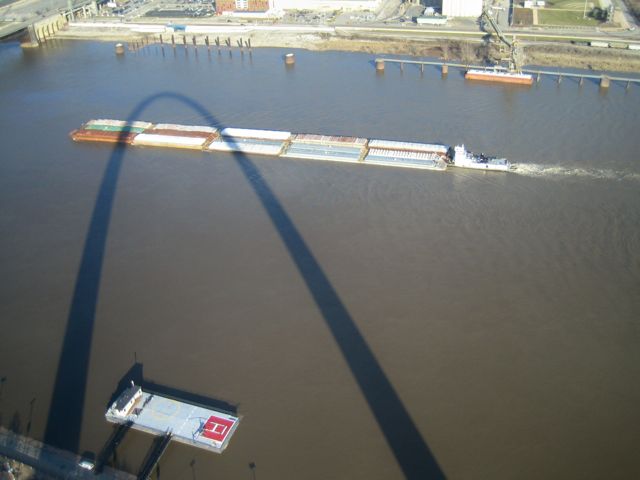
Down by the river, under the arches of the magnificent Victorian rail bridge, a figurative sculpture, captures the moment in 1805 when Lewis and Clark made landfall. 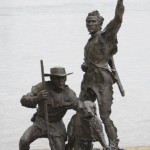 It’s high order kitsch. It seems out of place with the river, the barges, the driftwood, and long lines of rail freight. It captures a moment frozen in time, all the rest is timeless.
It’s high order kitsch. It seems out of place with the river, the barges, the driftwood, and long lines of rail freight. It captures a moment frozen in time, all the rest is timeless.
So much of what St Louis may have been has been hollowed out by carpark. An alternate rhythm of street level hardstand and multi story blocks suggest the irrepressible march of commerce, ugly and unforgiving. It reminds one of parts of ‘missing Melbourne’. The missing pieces, the voided non spaces are ‘felt’ like an amputee ‘feels’ the limb that once was. The loss defined by the ugliness and the incongruity of the leftovers. Down the main drag, the long clanking freight trains, endlessly grind upon ugly concrete overpasses. The Baseball stadium, bold and new, rises up from a sea of carpark and concrete pylon, a touch of Docklands.
Above it all, as evening draws, the methodical whirr of sirens, air horns and machinery competes with the few music clubs on the edge. The clubs, like the rest of the city prevail in isolated buildings. Leftovers, almost accidental. We spent two evenings at one, BB’s, homage to the king, (BB KING), and through it all the music, like the Mississippi mud, creeps into your subconscious.
The museum in Missouri is placed under the arch. Seamlessly, down ramps, we walked and marveled at the depth of American History on offer. Tellingly, an entire wall, Christo-sized, described the simple narrative of Loyalty medallions. Above the medallions stood the portraits stern and resigned of great indian chiefs. Each medallion, beautifully presented, stood alone in a separate display case, the text simple and emphatic listing the promise, the bondage, and betrayal over the course of a century. Each a talisman of another broken promise. The sequence of glass display cases and the rich gold medallions glittered enticingly. The early ones, decorated by the relief portrait, (beautifully engraved) of a Bourbon or Hanoverian, the later ones a Jefferson and Washington, until in sync with the doomed race, their use had faded into oblivion.
This is what The Museum of the Native American* should have. A complete socio/political statement that suggested once and for all, the poignant “what if’? And above it all the understated maturity bestowed upon us by allowing ‘we the public’ to draw our own conclusions. There is nobility and respect in that. Another section dealt with the Indian Wars, and the eradication of the remaining native inhabitants. Cold, clinical, didactic, emphatic in its simplicity. The rest of the museum devoted its message to Missouri and St Louis, ‘gateway to the west’ of Bison and prairie. The enigmatic interior.
The bookshop proclaimed its maturity, entire shelves devoted to the native american and the story of dispossession and hope of recovery and respect. We made eager purchases.
St Louis has a soul.
* The Museum of the Native American, situated in the Mall in Washington DC. PCBYCP will report on our visit there soon.

